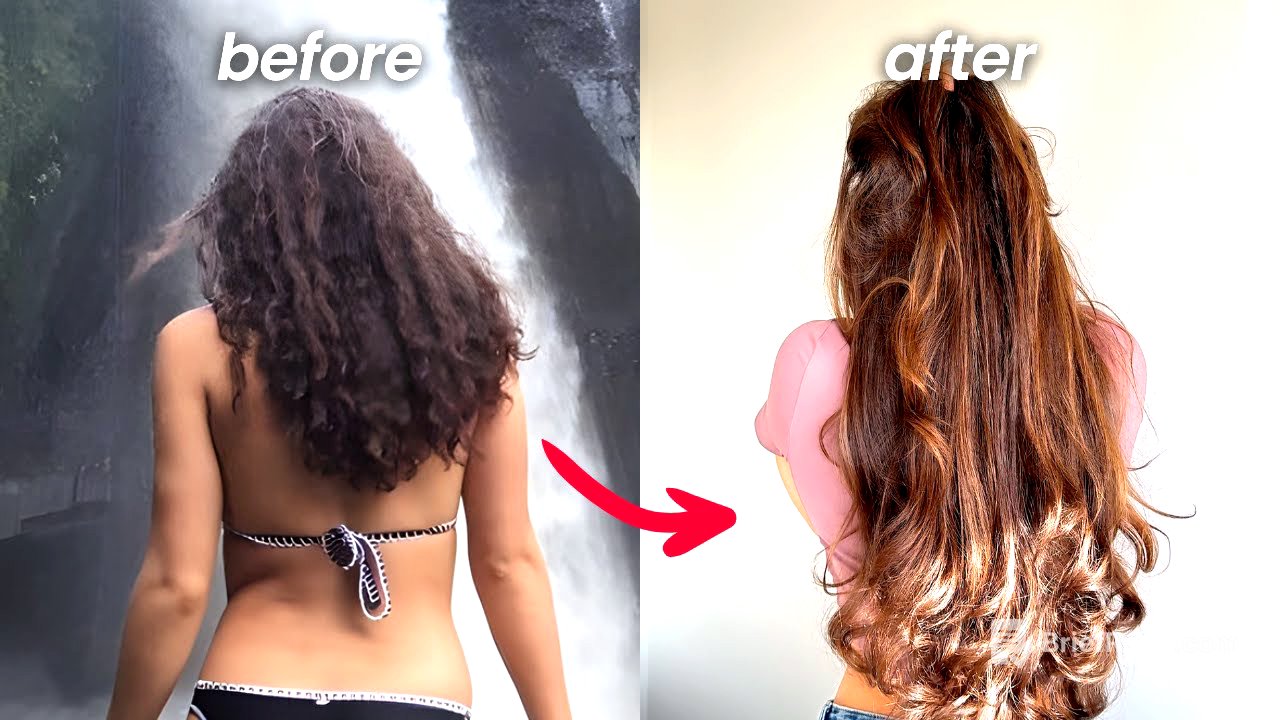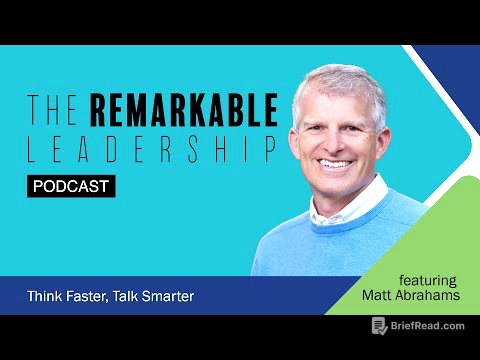TLDR;
In this video, Libby shares her comprehensive hair care routine for achieving long, thick, and fast-growing hair, drawing from her personal experiences and research over the past 10 years. She divides her advice into three main categories: length, thickness, and speed, emphasizing the importance of scalp health, proper hair care techniques, and lifestyle adjustments.
- Prioritize scalp health by addressing it uniquely and using appropriate shampoos (both sulfate and sulfate-free).
- Focus on maintaining hair thickness through a balance of protein and moisture, gentle handling, and smart heat styling.
- Promote hair growth by optimizing diet, managing stress, and understanding the hair growth cycle.
Intro [0:33]
Libby introduces herself and the video's focus: sharing her hair care knowledge to help viewers achieve long, thick, and fast-growing hair. She mentions her past struggles with hair growth and damage, emphasizing the importance of learning from her mistakes. She outlines the video's structure, which is divided into three categories: length, thickness, and speed.
Length [1:03]
Libby explains that achieving hair length is fundamentally about promoting hair growth through optimal scalp health. She stresses the importance of treating your scalp uniquely, rather than following generic advice. Washing hair frequency should be based on individual scalp needs, as infrequent washing can lead to oil buildup, clogged follicles, and irritation.
Treat the Scalp [1:23]
Libby emphasizes the importance of addressing your scalp's specific needs with the right shampoo, rather than blindly following recommendations. She also advises against always buying shampoo and conditioner as a set, suggesting it's better to mix and match products to target different concerns, such as using a specific shampoo for the scalp and a different conditioner for the hair ends. She shares her experience with Redken products, noting their effectiveness for her hair.
Buying Shampoo [2:34]
Libby advises against strictly buying shampoo and conditioner combinations, suggesting that the ideal shampoo for the scalp might not be the best for the hair ends. She recommends buying different products within the same brand to address specific needs.
Too Much Oil [3:04]
Libby warns against overusing oil on the scalp, as it can require excessive shampooing and scrubbing to remove, potentially causing irritation, especially for those with fine hair. While some oils can be beneficial, not all oils are suitable for every scalp. She recommends using lightweight oils like jojoba or almond oil sparingly, focusing more on scalp massage for blood circulation. She advises caution with heavier oils like coconut, avocado, and olive oil, which can weigh down the scalp.
Natural Shampoo [5:21]
Libby discusses her past preference for natural shampoos and her initial aversion to products with complex chemical names. She explains that she was misinformed, as many beneficial ingredients have complicated names. She notes that her hair improved when she stopped exclusively using natural shampoos, as some highly concentrated natural ingredients irritated her scalp.
Sulfates [6:02]
Libby shares her research on sulfates, explaining that they are important for breaking down heavy oil particles due to oil's sealant properties. She recommends using a combination of both sulfate and sulfate-free shampoos, suggesting a 2:1 or 1:1 ratio. For every one or two washes with a sulfate-free shampoo, she uses a sulfate-containing shampoo to ensure a clean scalp.
Thickness [7:39]
Libby transitions to the topic of hair thickness, noting that while the actual thickness of hair strands is determined by genetics and overall health, there are ways to influence the appearance and health of the hair. She emphasizes that how you treat the hair affects its overall appearance and that breakage is inevitable but can be minimized.
Protein vs Moisture [8:20]
Libby stresses the importance of providing hair with the right nutrients, balancing protein and moisture. Her hair needs more moisture than protein, so she uses a 2:1 ratio, moisturizing more often than applying protein treatments. Protein is essential for weak, damaged, or overly moisturized hair, as it helps to rebuild keratin, the protein that makes up hair. She recommends Redken acidic bonding treatments and the K18 hair mask. For moisturizing, she suggests conditioners with ingredients like panthenol, aloe vera, glycerin, and vitamin E. She shampoos twice, applies a deep conditioner or mask, and then a regular conditioner.
Silicones [10:00]
Libby addresses the debate around silicones, explaining that they act as sealants, locking in moisture but potentially preventing moisture from entering. She finds that layering hydrating ingredients first, followed by silicone-based products, works best for her hair. This approach nourishes the hair and then strengthens it with silicones, preventing moisture loss and damage.
Wet Hair [10:50]
Libby highlights the fragility of wet hair, explaining that hair strands swell to their maximum capacity when wet, making them more prone to damage. She advises being gentle with wet hair, including when brushing. She uses a detangling brush in the shower with conditioner and is extremely careful.
Towel Choice [11:48]
Libby recommends using a microfiber towel instead of a regular cotton towel to dry hair. Microfiber towels reduce friction and breakage, and their smoother surface helps to minimize tangling and frizz. She ensures her hair is pretty dry before moving on to the next step.
Heat Styling [12:13]
Libby discusses heat styling, noting that not all heat is equal. She prefers using a blow dryer with a warm or low heat setting, keeping it 15-20 cm away from her hair to avoid excessive heat in one spot. Hair damage can occur above 50°C, which damages the keratin bonds. She also emphasizes the importance of drying each section completely to prevent frizz.
Heat Protectants [13:10]
Libby stresses the importance of using a good quality heat protectant, recommending science-based brands like K18. She advises looking for heat protectants that disclose the temperature they can tolerate on the bottle.
Brushing [14:16]
Libby advises against brushing hair from the top down, as it can cause breakage, frizz, and static. Instead, she recommends brushing from the bottom up, starting with finger detangling to remove knots gently. She prefers detangling brushes without balls on the ends, as she finds those can rip and tear through her hair.
Night Routine [14:54]
Libby details her nightly hair routine, which includes oiling the lengths and ends of her hair with a lightweight, nourishing oil or serum to seal the hair cuticle and prevent dryness and breakage. She puts her hair in a low bun, wears a satin or silk bonnet, and then goes to sleep to prevent breakage, static, and frizz.
Speed [15:20]
Libby discusses how to make hair grow quicker, explaining the three phases of hair growth: anagen (growth), catagen (rest), and telogen (shed). While these cycles are influenced by genetics, lifestyle, and hormones, she focuses on controllable factors. She emphasizes the importance of a diet rich in good quality protein, as hair is made of protein. She also highlights the need to manage stress levels through activities like spending time in nature, walking, meditating, and breathing exercises.
Trims [17:20]
Libby addresses the misconception that trimming hair makes it grow faster, clarifying that trimming tidies up split ends but doesn't affect growth rate. She suggests creatively cutting hair with layers to maintain movement and volume while preserving length. She shares that she gets face-framing layers and a soft V-shape at the back to add volume and movement to her hair.









